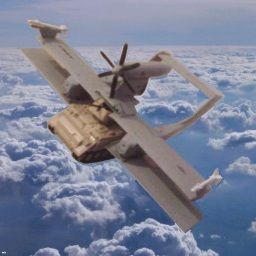A 1980s modernization lead to the Iowa class actually being equipped with some modern toys too
Sensors
- Mark 13 fire control radar
- Mark 25 fire control radar
- AN/SPS-49
- AN/SPS-67
Electronic Warfare and Decoys
- AN/SLQ-32(V)3 electronic warfare system
- AN/SLQ-25 Nixie acoustic decoy
- Mark 36 SRBOC chaff rockets
Armament
- 9 × 16 in/50 cal guns (3 Mounts x3)
- 12 × 5 in/38 cal guns (6 Mounts x2)
- 32 × BGM-109 Tomahawk launchers (8 Launchers x4)
- 16 × RGM-84 Harpoon launchers (4 Mounts x4)
- 4 × 20 mm Phalanx CIWS
and 5 UAVs
Can you imagine if they had gone further, and replaced the aft main battery with a bunch of Mk 41 VLS?
Dunkerque on the streets, Arleigh Burke in the sheets 😍
Yes, very nice, but hear me out: What if all that but also railguns?
Railgun tech isn’t there yet, the bottleneck is currently what’s bottlenecking a lot of higher tech, and that bottleneck is energy generation, storage, and consumption, so that’s why we don’t see more railgun and laser based tech.
You’re quite right, but this forum is for non-credible ideas, and we need something to counter the T-59.
Also barrel wear
Gatling railgun, only 1/6 the barrel wear per shot.
deleted by creator
Nothing like throwing a shell the weight of a car at the enemy.
But the car has GPS
It’s not “outdated” materiel if the entire arsenal of your opponent is outdated.
It’s not outdated if it still makes your enemy’s stuff go boom.
Not outdated if the enemy can’t hit it back.
80’s tech in Ukraine be like:
My brother in Christ I’ve seen MAXIM GUNS in use in Ukraine
deleted by creator
Longest range cannons we had while they were in service, but yeah, rockets and such go further. Would have been interesting to see what partially self-guided and rocket-assisted shells in Battleship size could manage though.
deleted by creator
That’s why you park it in the middle of the carrier support group.
What with the advances in guided and rocket-assisted artillery lately, I am unironically (and, considering the sub, I should also say credibly) convinced that there will be a naval gunnery renaissance in the next couple decades.
Not only that, VLS cells can’t be reloaded at sea, you have to go into port for that. Artillery shells don’t have that problem.
I also wonder how well anti-missile systems would work against artillery. I think it’s feasible to have some artillery on board vessels as a secondary to fall back on after spending all of the anti-ship missiles. Or you could fire the artillery alongside missiles to increase the variety of threats the target has to respond to.
Consider C-RAM (Army Phalanx) stands for Counter Rocket, Artillery, Mortar: I would assume it works perfectly fine against most artillery. But also, I suppose it would depend on the size of the artillery and type of the round. I wouldn’t expect a spray of 20-30mm rounds to do much at all to the trajectory of a 406mm Mk. 8 APC shell, for instance… but none of those are in service anymore.
Massive, inaccurate guns just aren’t relevant to warfare anymore. A Tomahawk missile can hit a target with high precision and comparable payload at 50x the range of the Iowa’s 16 inch guns. And for sustained bombardment, Arleigh Burkes have 5-inch guns that can fire 20 rounds a minute.
Good news they also have Tomahawks!
As part of their modernization in the 1980s, each of the Iowas received a complement of eight quad-cell Armored Box Launchers and four “shock hardened” Mk 141 quad-cell launchers. The former was used by the battleships to carry and fire the BGM-109 Tomahawk Land Attack Missiles (TLAMs) for use against enemy targets on land, while the latter system enabled the ships to carry a complement of RGM-84 Harpoon anti-ship missiles for use against enemy ships. With an estimated range of 675 to 1,500 nautical miles (1,250 to 2,778 km; 777 to 1,726 mi)[103] for the Tomahawks and 64.5 to 85.5 nautical miles (119.5 to 158.3 km; 74.2 to 98.4 mi)[103] for the Harpoons, these two missile systems displaced the 16-inch guns and their maximum range of 42,345 yards (38.7 km; 20.9 nmi)[36] to become the longest-ranged weapons on the battleships during the 1980s; the ships’ complement of 32 Tomahawk missiles was the largest until the Mk 41 VLS-equipped Ticonderoga-class cruisers entered service.
deleted by creator


